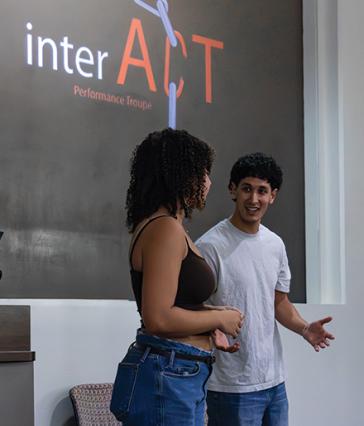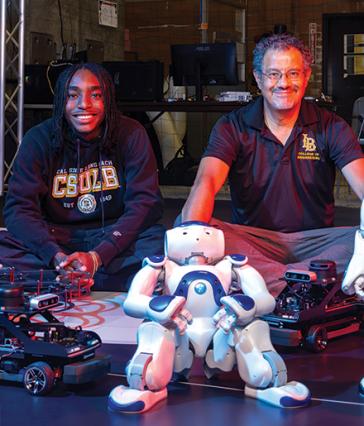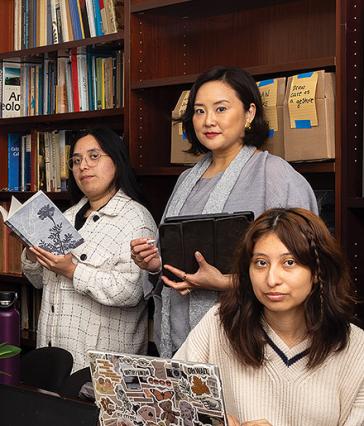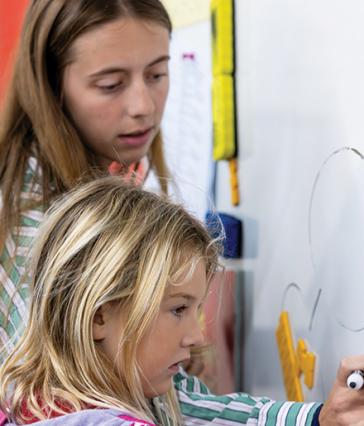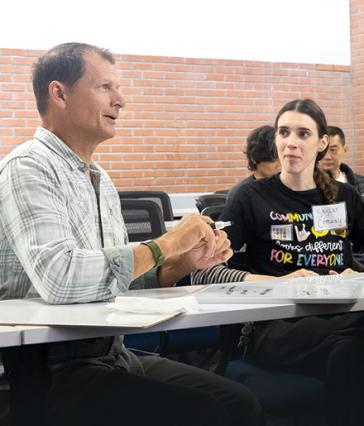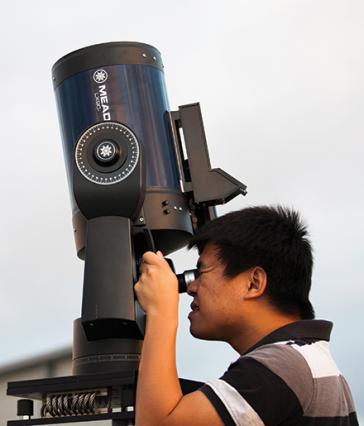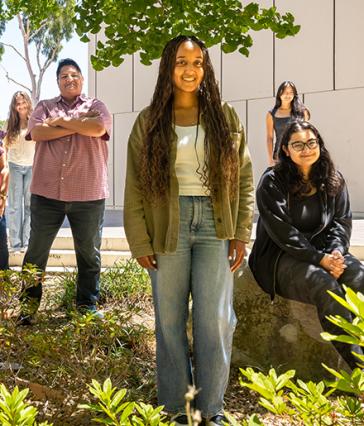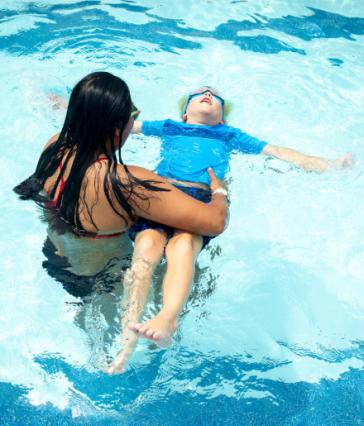CSULB student researchers delve into stingray behavior
Getting stung by a stingray can turn an enjoyable day at the beach into a painfully miserable journey home, the rest of day spent soaking the affected area in buckets of hot water.
While the “stingray shuffle” continues to be the best way to avoid those pesky vertebrates that invade Southern California beaches each spring and early summer, a group of Cal State Long Beach marine biology undergraduate and graduate students have researched how and why stingrays cause beachgoers so much pain.
The students, under the guidance of Benjamin Perlman, Ph.D, a lecturer in the Biological Sciences Department, studied how to step on a round stingray without getting stung by their barbs.
Toxins are then released from a gland at the base of the barb and the toxin travels along the barb and gets envenomated (injected) into the person via the puncture wound caused by the barb's sting.
One of the goals in studying round stingrays is to improve beach safety for the thousands of beachgoers that head to the coastline each summer. With the large crowds comes increased stingray-related injuries. Research has shown that on average there are more than 400 stingray injuries in Seal Beach alone.
“They aren’t very threatening or looking to harm you,” said Anthony McGinnis, a marine biology major. “What we've noticed during our tests is that they strike, in most instances, when they are completely restricted from movement by being stepped on in the middle region of their body. If you step on their pectoral fins or snout, they generally look to escape or swim away.”
In other words, step on the right or left sides of their bodies and stingrays will not flip their barbs toward ankles or feet.
Marine biology undergraduate student Sean Ono said that while stingrays are inherently predisposed to striking, the fish’s instinct is to try to avoid that unless threatened.
“In the wild, rays reserve strikes for when they are pinned down by a predator, such as a white shark or in our case, a human foot,” Ono said.
Perlman, along with graduate student Elizabeth Jahn from the Shark Lab, uses ocean seines – a method that captures fish with large nets that are dragged past the surf – to collect round stingrays. While Jahn uses her catch to study the density and abundance of round stingrays, Perlman and his students transport the fish back campus where he and the students simulate stepping on the rays by using a fake foot.
Perlman purchased a zombie foot from a Halloween store, filled it with sand to give it weight and added plastic pipe for sturdiness. The students then attach high-speed cameras and record the “stepping” action from the side and top.
“We can measure the speed at which the tail moves,” Perlman said. “We also can measure the acceleration at the end of the tails and estimate the forces it generates when it strikes this fake foot.”
Justin Yip said the team collects the stingrays’ reactions from being stepped on by the fake foot and collects the acceleration data.
“I feel like that (the foot) has been more popular than our actual research project,” Yip said. “It’s a funny story, but it does play a significant part in our research later.”
Beaches such as those in Long Beach, Huntington Beach and Seal Beach are known for its swarms of sting rays that are drawn to its warmer shallow waters. Seal Beach, often called “Ray Bay,” is warmed by a nearby power plant.
“A lot of people have an unreasonable fear of sharks, while the round stingray is the leading cause of beach injuries,” said Yip. “I don’t want people to demonize the stingrays but rather inform them of ways to be safe in the water.”
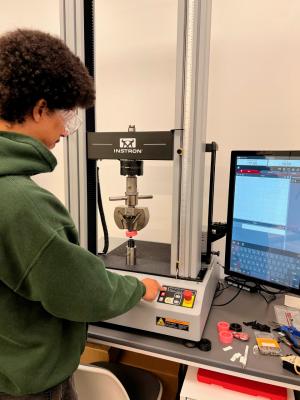
Avoiding painful stings isn’t the only reason Perlman’s team has been focused on stingray barbs.
With a donation from an anonymous alumnus, the marine biology students are also studying the kinematics or locomotion of the tail-strike behavior in their work with a group of engineers looking to produce a protype of stingray resistant neoprene surf boot that not only keep feet warm but prevent the barbs from penetrating.
This type of investment builds and strengthens research programs that help our Beach graduates make an indelible impact on the scientific community in the workforce, one of the priorities of CSULB’s No Barriers comprehensive fundraising campaign.
Perlman’s students use barbs that have been removed from the stingrays (they grow back) and attach them with a clamp to a machine that repeatedly pokes at the neoprene material to test the material’s strength.
“We can manipulate the speed and the force for the barb to move into this surface booty material,” Perlman said. “It's basically neoprene with a lining of rubber composite, and we measure the forces that it takes to cause the neoprene to fail.
“From there, we can figure out what forces are generated when they strike. So, if this material can withstand the force before it fails, then we're on to something.”
Perlman’s lab also measures the sharpness of the barbs, the number of serrated notches, the differences between males and females and their behavior whether they are small, medium or large.
The donor, an avid surfer, said he hopes that by expanding and understanding these stingrays would lead to safer and more positive interactions between beach goers and the fish.
"I've been surprised the impact our family's relatively modest donation has had on already in achieving our goal and was happy to recently recommit to funding the project forward given the care and pragmatic approach Dr. Lowe & Dr. Perlman and their students have taken," the donor said. "I look forward to seeing continued movement in a positive direction for ray/human interactions as a result."





